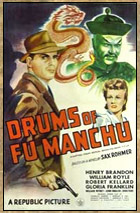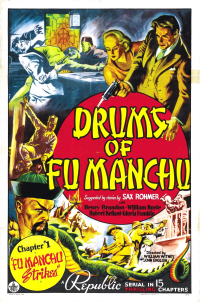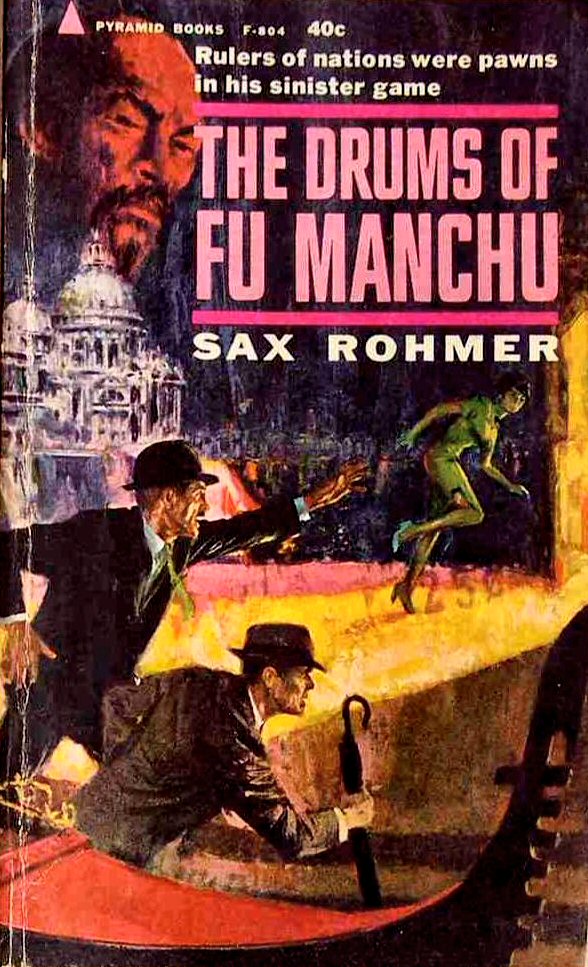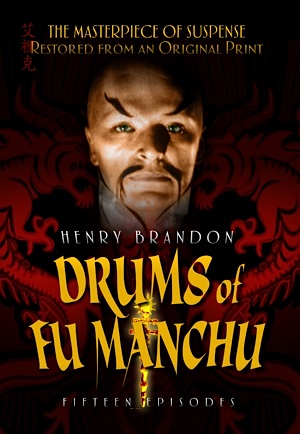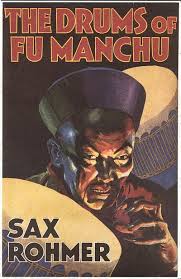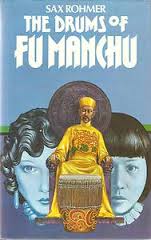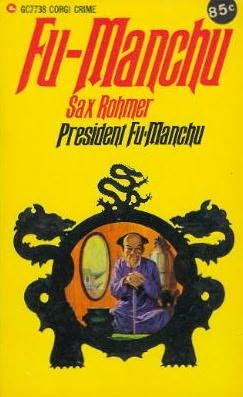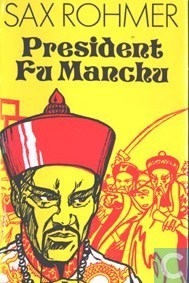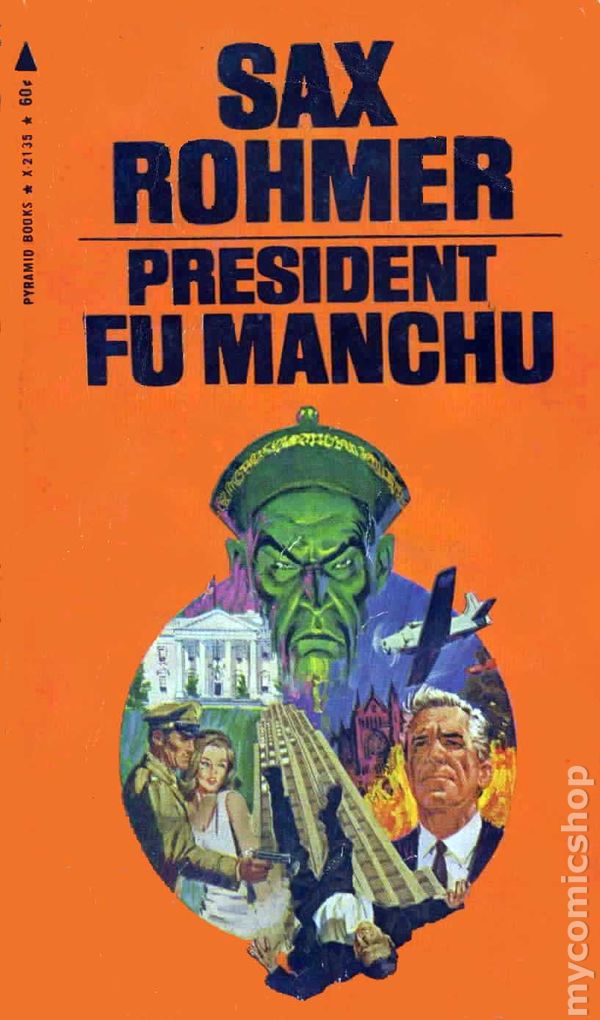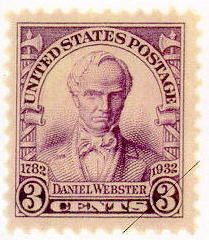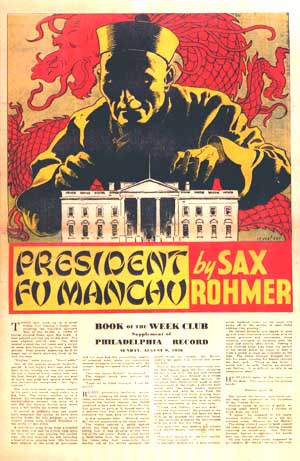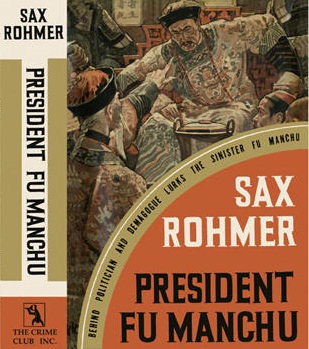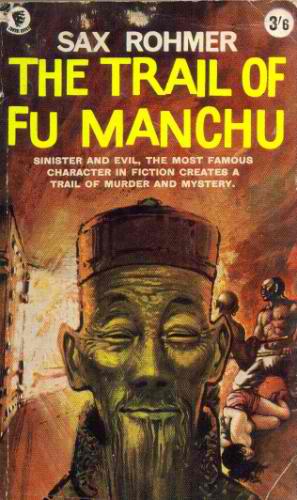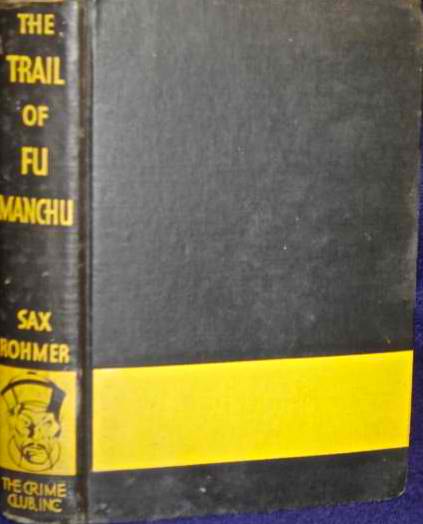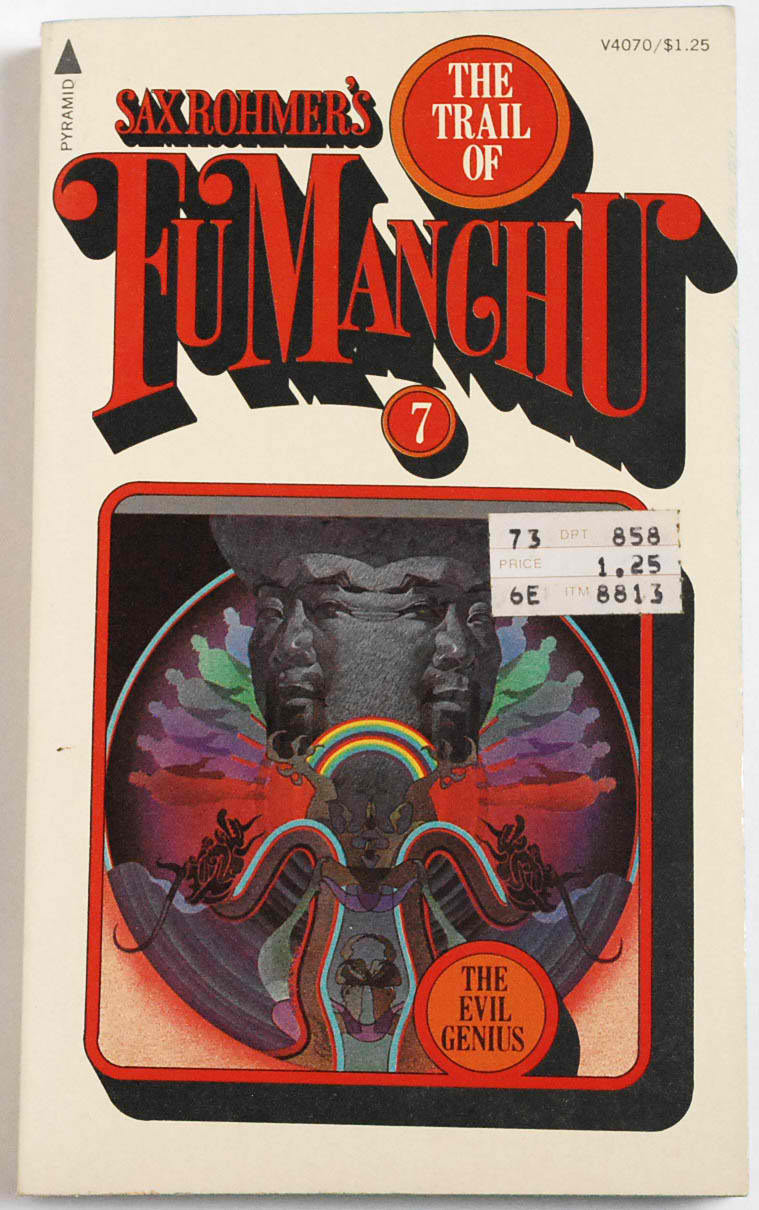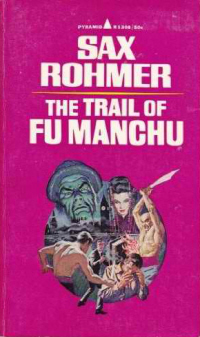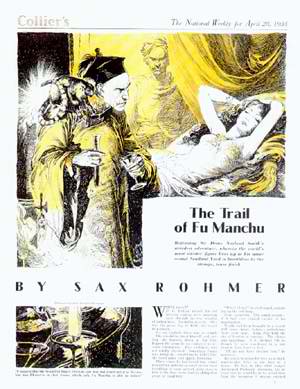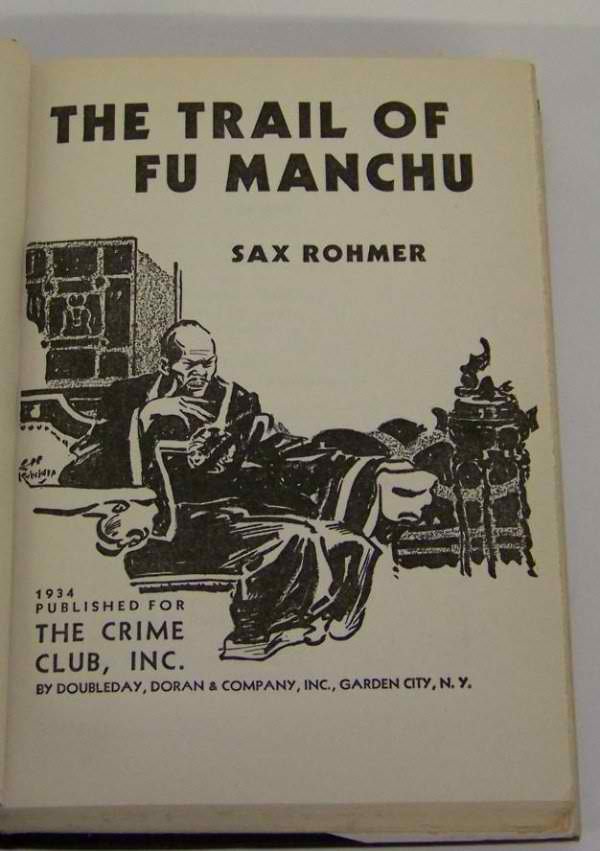Blogging Sax Rohmer’s The Drums of Fu Manchu, Part Four

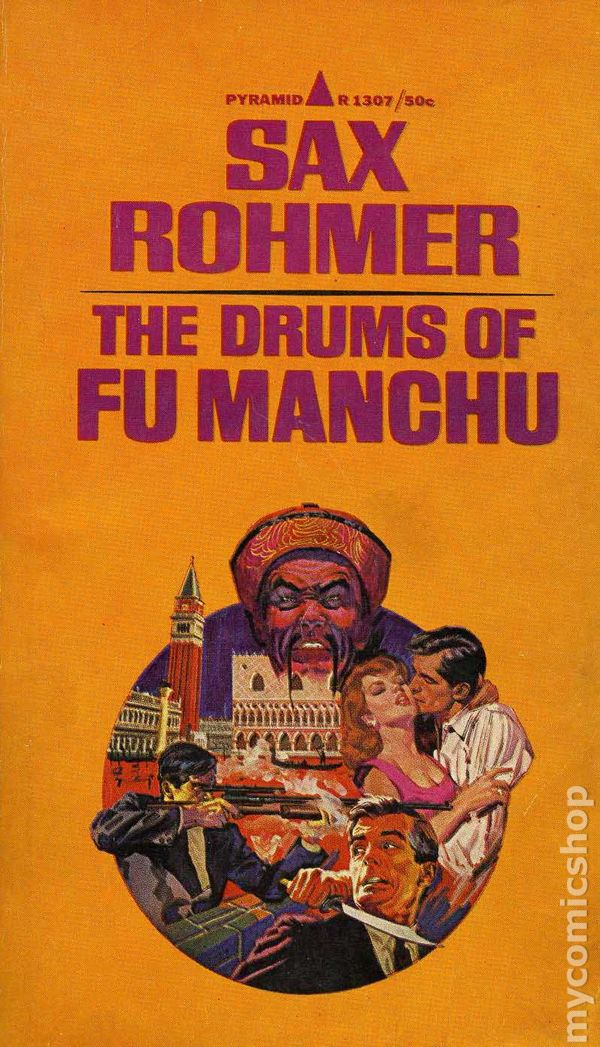 Sax Rohmer’s The Drums of Fu Manchu was first serialized in Collier’s from April 1 to June 3, 1939. It was published in book form later that year by Cassel in the UK and Doubleday in the US. The last quarter of the book picks up with Sir Denis Nayland Smith and Bart Kerrigan having witnessed Dr. Fu Manchu’s meeting with German dictator Rudolf Adlon. Der Fuhrer received his final warning from the Si-Fan and was given one hour to leave Venice or else he would face assassination.
Sax Rohmer’s The Drums of Fu Manchu was first serialized in Collier’s from April 1 to June 3, 1939. It was published in book form later that year by Cassel in the UK and Doubleday in the US. The last quarter of the book picks up with Sir Denis Nayland Smith and Bart Kerrigan having witnessed Dr. Fu Manchu’s meeting with German dictator Rudolf Adlon. Der Fuhrer received his final warning from the Si-Fan and was given one hour to leave Venice or else he would face assassination.
Smith and Kerrigan make their way through the villa and come upon the lotus room with the trap floor once more. Inside the room is Ardatha, with a set of keys, on a mission of mercy to save them from their fates. She leads both men out of the house, giving Smith a key to lock the door behind him, but refuses to flee with them.
Sir Denis quickly raises the Venetian police to raid the villa, in the hopes of rescuing Rudolf Adlon, who disappeared the previous night and has still not returned. The raid fails, as the villa is deserted except for the steward, who denies all knowledge of any Asian visitors and informs them the villa is the property of James Brownlow Wilton, an American newspaper tycoon, munitions manufacturer, and Nazi sympathizer (and a fairly transparent analogue of William Randolph Hearst). Mr. Wilton has just left his villa for his yacht, Silver Heels.
